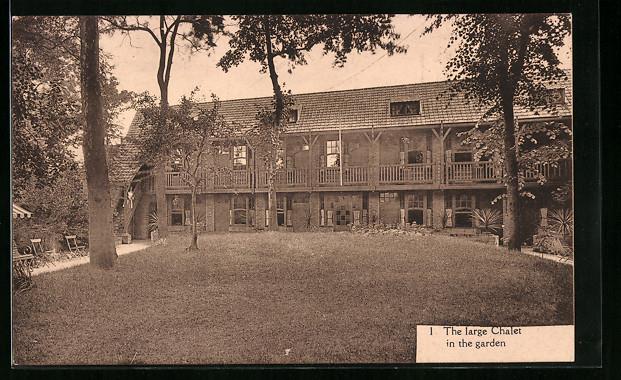Timeline of the building
In March 2008, Jo and Kathleen took over the Hotel Montanus. But these buildings have been part of the Bruges landscape for much longer. Let's take a look together at the history of these premises over the past 500 years.
19 October 1566
Jan Pelser (Pilse) and his wife Catheline Maertins bought one house from the Scotis family. A large piece of land adjacent to it was owned by Jan van Peenen, which he also sold to Pelsers in 1574. Jan Pelsers was a surgeon and in 1575, at the outbreak of a new plague epidemic, was appointed by City of Bruges to combat the plague. A so-called ‘red master’. Recognisable at the time by his red attire and beak-shaped mask, paid for by the city and followed by his aides who themselves wore special attire with a red plague stick in their hands. Jan Pelsers survived 3 plague epidemics and in 1569 published his book ‘Of the Peste: A General Methodus to cure that contagious Disease of the pestilentiaele cortse.’ He built a new large house on the site of the Scotis house and did an extension in 1577 where he left the shrubbery with the summer house unchanged.
February 1581
After Jan Pelser's death, where he nevertheless died of the plague, his widow will resell the property to Jan Everbout who lived in there for a long time.
1586 - 1622
During this period, the property had seven different owners.
Joos Casembroot, lord of Oostwynckel held the property from 1622 to 1646. He was a councillor and alderman of the city of Bruges several times.
Maximiliaan van Os, lord of Waterdijk became the new owner after him.
From 1670 to 1710, lord and master Joannes Baptist Pijnckel, canon and archdeacon of St Donaas Cathedral. His numerous heirs would rent the property for a long time to squire Cornelis van Hegelsom. Johannes Bonifacius Lem, the provost of the Church of Our Lady, one of the heirs chose to live there himself for a long time.
1710 - 1762
The property was then owned by Marcus Vleys and his cousin Pieter Pangaert. Marcus Vleys clearly belonged to Bruges' beau monde. He owned many houses and from the estate description drawn up after his death in 1740 it could be concluded that he was a merchant and probably a brewer. The well-known brewery de Blauwe Arend on Carmersbrug was his property. The Pangaert family would sell it to the Pecsteen family in 1762.
1762 - 1849
In 1762, Jean-Françoise Pecsteen became the new owner. He was a lawyer of the Council of Flanders and counselor of the Brugse Vrije. Married in 1954 to Françoise Van den Abeele, he died in 1783. His widow would continue to occupy the house with her several children. The sons studied law and the unmarried daughter Marie continued to occupy the property until her death in 1849. In 1830, her niece Virginie Pecsteen commissioned the renovation of the façade and major remodelling of the house. Unfortunately, no plans or drawings of this have survived. The de Schietere de Loppem family (her husband) lived there with their six children and some relatives. In 1874, daughter Ida married Françoise de Thibault de Boesinghe and took possession of the house after the death of her parents. She remodelled the gateway to the left of the property in 1881.
1900 till now
In 1913, the property was split into 2 separate residential entities. Nieuwe Gentweg 78 was converted on behalf of merchant Louis De Smedt to the design of architect Amedée Dollé. Nieuwe Gentweg 76 had already been altered in 1913 on behalf of jeweller Juliaan Bennick to a design by architect René Cauwe. Driekroezenstraat 17 will also be in their possession. Number 76 became a hotel and number 78 remained a residential house. Nieuwe Gentweg 76 had for many years been set up as Hotel Ste Christophe, a modern establishment for that time, had 23 rooms and was given a capacity of 32 rooms when it merged with No 78 in 1998. In the garden is a 2-storey pavilion designed in 1927 in cottage style influenced by Anglo-Norman architecture, which was a very unique thing for Bruges. This style was seen more on the coastal region. The lounge at the front of the hotel is named after Frank van Acker, late mayor of Bruges who lived at number 78 for a long time. It still retains the 19th-century empire style with the marble fireplace and large mantel mirror.
Building no. 17 Driekroezenstraat
There are records of this little house from 1586 onwards. It was part of a piece of land on which there were 2 other houses and horticultural land called Ten Keerseboome, which was operated by Jan Arents before 1580. Ten Keerseboome remained in the possession of the horticulturists until 1691, after which it came into the hands of the Verhouve family. Jan Verhouve undoubtedly continued to rent it out to the horticulturists. Verhouve did not sell the property until 1773 to Charles Louis Le Poivre, lord of Mullem. In 1788, house and grounds came into the possession of bleacher Jacques De Souttere. Before 1830, the property was occupied by the Buyck family. Piette Buyck, one of the most important 19th-century architects, lived there for 15 years with his parents and five siblings. The house's greatest feature is the richly decorated mantelpiece in stucco with the portrait of (most probably) Charles of Lorraine. The property passed through several more hands during the 19th century until it came into the possession of jeweller Juliaan Bennick in the early 20th century.


